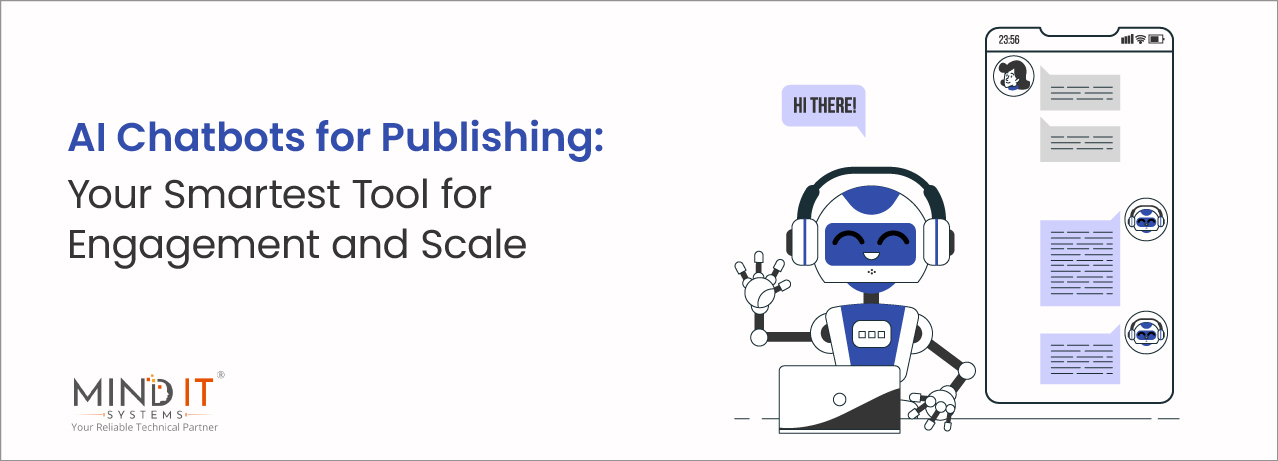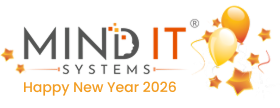
AI Chatbots for Publishing: Your Smartest Tool for Engagement and Scale
Few imagined AI chatbots would become integral to the publishing industry—an ecosystem traditionally driven by human creativity and editorial judgment. But look closely, and the signs are everywhere.
According to PwC, 52% of companies in the media sector have already implemented some form of AI to automate customer interactions. Meanwhile, customer expectations are rising; 73% of readers expect instant brand responses, according to Salesforce’s State of the Connected Customer report.
What does this mean for publishing leaders? Reader satisfaction, retention, and subscription growth are no longer tied only to content quality, but also to how seamlessly you interact with your audience. This is where AI chatbots for publishing step in—not as gimmicks, but as quietly effective enablers of scalable service and engagement.
Where AI Chatbots for Publishing Deliver the Most Strategic Value?
AI chatbots in publishing go beyond basic automation—they solve persistent operational bottlenecks while directly enhancing the reader experience. From subscription workflows to content discovery, here’s where they deliver measurable impact:
1. Improved Reader Engagement
AI-powered chatbots offer real-time assistance, suggest personalized content, and provide interactive elements like quizzes and stories, keeping readers actively engaged.
Business Outcome:
- Higher reader satisfaction and retention
- Increased time spent on the platform
2. Streamlined Operations and Reduced Costs
Routine tasks like customer support, formatting, and CRM management are handled by chatbots, minimizing manual efforts and improving workflow efficiency.
Business Outcome:
- Reduced operational expenses
- Teams can focus on innovation and strategy
3. Faster Content Discovery
With curated suggestions and instant updates based on user behavior, intelligent chat systems simplify navigation and help readers quickly find relevant content.
Business Outcome:
- More page views per session
- Greater content value per user
4. Actionable Editorial Insights
Post-reading feedback and user behavior data collected by chatbots empower editorial teams to fine-tune their content strategies.
Business Outcome:
- Improved content relevance
- Data-driven editorial planning
5. Seamless Breaking News Delivery
News bots deliver real-time alerts to messaging apps and devices, ensuring timely and contextual delivery of urgent content.
Business Outcome:
- Stronger brand trust
- Higher engagement during peak news cycles
6. Scalable Lead Generation
By capturing user preferences and offering tailored subscription prompts or product recommendations, AI chatbots support audience growth and sales enablement.
Business Outcome:
- Improved lead conversion
- Growth in subscribers and revenue
You don’t need a massive overhaul to see impact. One smart shift can elevate your team’s daily flow.
Practical Wins from the Frontlines: Real Publishing Use Cases
Real innovation doesn’t just happen in theory—it’s tested and proven on the ground. Here are two publishing organizations that have meaningfully integrated AI chatbots to solve real challenges and elevate their audience experience:
1. The Washington Post – “Climate Answers” Chatbot
Built on Post content, this chatbot answers climate-related queries with editorial integrity—even saying “I don’t know” when unsure.
Impact:
- Boosted trust through transparency
- Extended content engagement
- Delivered scalable, real-time education
2. USA Today – “DeepDive” Chatbot
Designed to enhance article relevance, DeepDive recommends contextually related stories and multimedia content as readers browse.
Impact:
- Improved reader engagement and session duration
- Reduced bounce rates with intelligent content suggestions
- Created new opportunities for personalized ad placements
These cases show how chatbots can elevate engagement while staying true to a publisher’s brand.
Implementing Chatbots: A Business Strategy, Not Just a Tech Tweak
Implementing AI chatbots for publishing isn’t about following a trend but addressing operational blind spots and improving margins.
Success doesn’t lie in plugging in a chatbot and hoping for magic. It lies in:
- Identifying high-friction reader journeys
- Mapping clear escalation paths (AI + human handoff)
- Setting up analytics to track impact on KPIs like engagement, conversion, and retention
This is not an IT decision—it’s a business strategy decision. And it starts by asking: Where are we losing the most time, money, or readers due to a lack of scalable interaction?
What Publishing Leaders Should Prioritize First?
If you’re considering integrating AI chatbots into your publishing operations, here’s what to focus on:
- Reader Experience First: Use chatbots to guide, not gate.
- Scalability, Not Replacement: Augment your team, don’t replace them.
- Actionable Analytics: Track usage, drop-offs, and user satisfaction.
- Brand Voice Consistency: Ensure the chatbot reflects your editorial tone.
In my advisory work with publishing executives, I’ve seen the best results come from reader-first strategies enabled by AI, not tech-first deployments. The chatbot isn’t the story—it’s the infrastructure that makes good stories easier to find, subscribe to, and support.
For media houses that see digital transformation as an enabler, not a disruption, AI chatbots will prove to be one of the most quietly transformative investments they make in the next 12–18 months.
Real transformation starts with practical, tested steps. Let’s discuss what strategies can work in your environment.
Ready to Rethink Reader Interaction?
Want to explore how an AI chatbot could fit into your publishing workflow? Whether it’s supporting subscriptions, curating content, or gathering feedback, getting started doesn’t require a complete overhaul.
And if you’re unsure where to begin, connecting with an IT strategy consulting expert can help align AI capabilities with your current publishing operations, without disrupting what’s already working.
Reach out to continue the conversation: info@minditsystems.com
Let’s explore what functional automation could look like for your readers—and your bottom line.
Share this post
About the Author

Sujoy Roy
(Head – Digital Marketing)
From my teenage time, I had a quench to solve problems and loved leadership. Starting my career in relation management, ignited my passion for managing people. While managing I realized technology needs to be incorporated to keep pace with the changing world & do my work efficiently.

